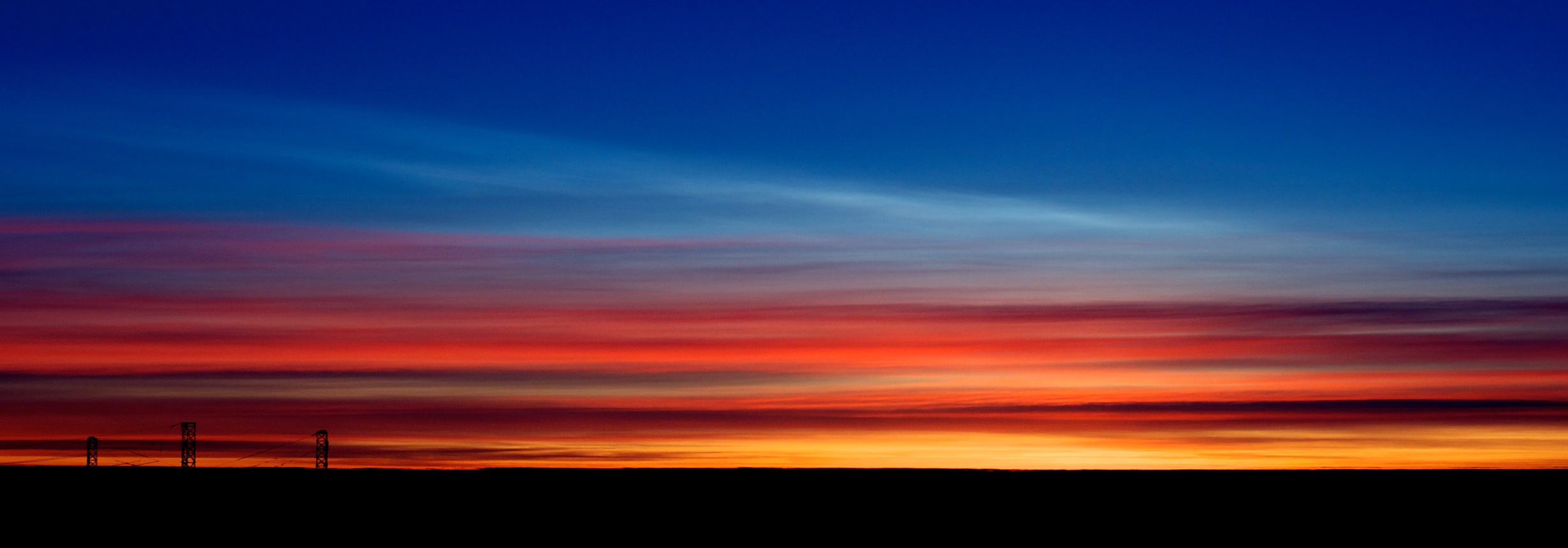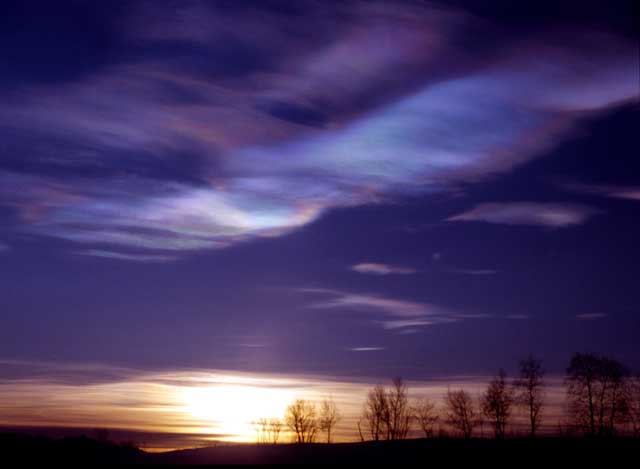Hi guys, in this post I would like to tell you about a natural phenomenon. And the phenomenon is polar stratospheric cloud.
Polar stratospheric clouds or PSCs, also known as nacreous clouds (from nacre, or mother of pearl, due to its iridescence), are clouds in the winter polar stratosphere at altitudes of 15,000–25,000 meters (49,000–82,000 ft). They are best observed during civil twilight when the sun is between 1 and 6 degrees below the horizon. They are implicated in the formation of ozone holes. The effects on ozone depletion arise because they support chemical reactions that produce active chlorine which catalyzes ozone destruction, and also because they remove gaseous nitric acid, perturbing nitrogen and chlorine cycles in a way which increases ozone destruction.
The formation : The stratosphere is very dry; unlike the troposphere, it rarely allows clouds to form. In the extreme cold of the polar winter, however, stratospheric clouds of different types may form, which are classified according to their physical state and chemical composition. Due to their high altitude and the curvature of the surface of the Earth, these clouds will receive sunlight from below the horizon and reflect it to the ground, shining brightly well before dawn or after dusk. PSCs form at very low temperatures, below −78 °C (−108 °F). These temperatures can occur in the lower stratosphere in polar winter. In the Antarctic, temperatures below −88 °C (−126 °F) frequently cause type II PSCs. Such low temperatures are rarer in the Arctic. In the Northern hemisphere, the generation of lee waves by mountains may locally cool the lower stratosphere and lead to the formation of PSCs. Forward-scattering of sunlight within the clouds produces a pearly-white appearance. Particles within the optically thin clouds cause colored Interference fringes by diffraction. The visibility of the colors may be enhanced with a polarising filter.
PSCs are classified into three types Ia, Ib and II according to their chemical composition which can be measured using LIDAR. The technique also determines the height and ambient temperature of the cloud.
Type I clouds contain water, nitric acid and/or sulfuric acid and they are a source of polar ozone depletion.Type Ia clouds consist of large, aspherical particles, consisting of nitric acid trihydrate (NAT).
Type Ib clouds contain small, spherical particles (non-depolarising), of a liquid supercooled ternary solution (STS) of sulfuric acid, nitric acid and water.
Type Ic clouds consist of metastable water-rich nitric acid in a solid phase.
Type II clouds, which are very rarely observed in the Arctic, consist of water ice only.
Only Type II clouds are necessarily nacreous whereas Type I clouds can be iridescent under certain conditions, just as any other cloud.
 |
| Type I |
|
Arctic stratospheric cloud |
 |
| Type II |

Beautiful, isn't it? That's why I chose this phenomenon for this task. Just imagine that above you there is a colorful cloud. Even more if you see it from a very high place. Sounds more like heaven to me. I wish I could see this phenomenon someday :)
(Source : http://en.wikipedia.org/wiki/Polar_stratospheric_cloud
http://commons.wikimedia.org/wiki/Polar_stratospheric_cloud)
(Source : http://en.wikipedia.org/wiki/Polar_stratospheric_cloud
http://commons.wikimedia.org/wiki/Polar_stratospheric_cloud)


No comments:
Post a Comment